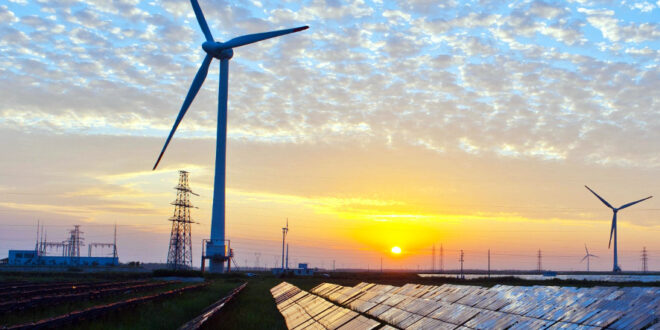The EU has set itself a new renewables target for 2030 and wants to reach a share of at least 42.5% and ideally 45% renewables in its energy consumption.
Commission President von der Leyen recently made clear that the Union strives for a net-zero power sector by 2040.
However, it will be near-impossible to meet or even exceed this new ambition without a strong green energy push in Central and Eastern Europe.
A key opportunity to enshrine higher national commitments on wind and solar is the upcoming revision of National Energy and Climate Plans (NECPs) due in June.
Current renewables targets are very low with Hungary, Slovakia, Bulgaria, Czechia and Poland accounting for the lowest targets among all EU countries in their current NECPs.
CEE currently generates just 25% of electricity from renewables, compared to 55% from fossil fuels. This has resulted in some of the most expensive electricity prices in the EU and has made the region vulnerable to volatile costs and supply issues.
The good news is that there is much more potential for renewables. A new Ember report shows that Central and Eastern European countries (Estonia, Latvia, Lithuania, Poland, Czechia, Slovakia, Hungary, Slovenia, Croatia, Romania and Bulgaria) have the potential to increase the share of renewables in their power system to 63% in 2030.
This means a six-fold increase in wind and solar capacity from 35 GW to 196 GW.
Renewable power brings many benefits
Increasing wind and solar targets would bring benefits to governments in Central and Eastern Europe. It would open at least €137 billion in EU funding to invest in the energy transition.
Ember’s modelling also shows that it is possible for the region to build a surplus of low-cost green electricity.
With 200 GW of wind and solar, Central and Eastern Europe could export 23 TWh of electricity in 2030, compared to importing 7 TWh in 2022.
More electricity from wind and solar would lower average power prices by almost a third compared to the current policy scenario. This also means that CEE power prices would drop below the EU average, making the region more attractive for new investments.
If the region fails to keep up the pace, the faster and larger planned rollout of cheap renewables in neighbouring countries would reduce the competitiveness of CEE economies and lead to higher costs of living.
The lack of green electricity in national power grids can become a blocker for businesses, who are setting themselves decarbonisation targets and relying on renewables-based electricity to reach them.
Many European governments have already recognised that the only way to provide cheap and safe energy for their citizens and businesses is through a rapid expansion of renewables.
For the CEE region, this is especially important, since the close proximity to Russia and the historical dependence on Russian fossil fuels has become a key security threat.
Collaboration will unlock the region’s full renewables potential
Central and Eastern Europe will only be able to benefit from its full potential by collaborating across borders.
Some of the largest energy consumers like Czechia or Hungary are not able to access the advantages of offshore wind energy while countries like Latvia and Estonia could generate 3-4 times their electricity demand from wind alone.
Collaboration could include trading green electricity, co-financing necessary investments or planning cross-border wind and solar tenders as well as exchanging knowledge on how to tackle political, administrative and technical barriers to more renewables.
Momentum is already building in the region. Last year, wind and solar capacity grew by 28%, twice the EU-wide average of 15%. Across the region, countries are reaching new renewable records as wind and solar markets continue to grow.
Governments in Central and Eastern Europe now need to substantiate these achievements with long-term planning to speed up the pace of solar and wind deployment.
A first step would be setting ambitious wind and solar targets for the end of the decade in the updated National Energy and Climate Plans. This needs to be followed by a political effort to unlock barriers to renewables deployment.
For example, by streamlining permitting, unlocking grid bottlenecks, and increasing administrative capacity. This will allow Central and Eastern Europe to join the pan-European clean power train.

 Iran Energy News Oil, Gas, Petrochemical and Energy Field Specialized Channel
Iran Energy News Oil, Gas, Petrochemical and Energy Field Specialized Channel



